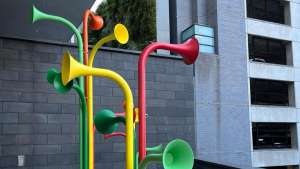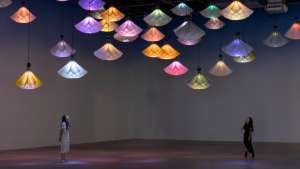Annually over one million children, most of whom are under the age of five die from diarrheal diseases – research has shown the leading cause of this is unsafe drinking water. In India, it is reported that approximately 1600 children die each day from waterborne diseases present in the drinking water. Even if these diseases don’t result in fatalities, chronic diarrhoea in early childhood often leads to long-term consequences in healthy development.
For municipal governments in low-income countries, centralised treatments and distribution systems are prohibitively costly. However, water treatment at the actual Point-Of-Use (POU) is somewhat more cost effective – e.g. domestic filters and/or chlorine tablets, but its success is limited due to capital cost and challenges establishing the correct dosage. After almost 20 years of using a POU technology, a mere 11 per cent of people living in low-income generating countries use a POU product. Enter Zimba.
Selected by researchers of prestigious Stanford University and icddr-b for a three-month trial in the impoverished area of Dhaka, Zimba was implemented to study the accuracy and consistent levels of dosing. A single Zimba device was also under pilot for one year in Orissa with Spring Health that serviced over 200 families.
This international and multi-disciplinary group originating from D-Lab in Massachusetts Institute of Technology (MIT) – and now based in Kolkata, India – aims to improve access to safe drinking water for millions of people around the world who currently do not have this basic human need. Zimba is a device that safely, accurately and automatically adds chlorine to water in the correct proportions irrespective of water flow rate. This innovative device seeks to eradicate the practice of consuming biologically unsafe water because there just isn’t anything else to drink. Using Zimba, the water that these people drink becomes safe almost by default, as it disinfects the water where these communities collect their existing water supply.
How it works
The device can be fitted to an existing water source e.g. a well hand-pump, the tap of a rainwater harvesting cistern or a faucet of a piped water system. No electricity is required only gravity to operate and handle thousands of litres each day. It harnesses the principle of an automatic syphon to add a set amount of chlorine per water batch. It is designed sans moving parts such as hinges and gears that are well-known to be the first level of failure in most water sanitation designs. The ratio of chlorine to water in drinking water is so micro that it is measured in parts per million – for most this is a problem but Zimba is intuitive to work within these fine parameters to ensure accuracy.
Unlike conventional water purifiers, Zimba negates the need to replace expensive cartridges and is making waves in the industry for being robust – a pertinent feature required in tackling this type of societal problem. The fact that it is gravity-powered means that there are no expensive electricity bills or any unreliable power sources such as batteries with its circuit boards particularly in rural settings.
Zimba and Chlorine
Sodium Hypochlorite solution (NaOCl), commonly known as bleach is required to be used in conjunction with Zimba. In many countries, it is available in different strengths and Zimba is compatible with the weakest expression of this ‘bleach’. Strength dependent, Zimba’s dose adjustment slider needs to be set so as to dispense the necessary chlorine level to the output of water. Once this is completed, Zimba can treat up to 20,000 litres of water each day before any refilling is required.
Weighing in at approximately 12kg, Zimba’s outer shell is made of food-grade fibreglass to offer the robustness it needs when being transported. Its internal components comprise of pure polypropylene plastic. Set-up of the device is under 30 minutes without the need for any special tools.
Check out the device on TedX
More on designers tackling the water crises:
NexLoop looks to nature to create a remarkable water generator
Could wastewater biorefinery help in the Cape Town water crisis?







